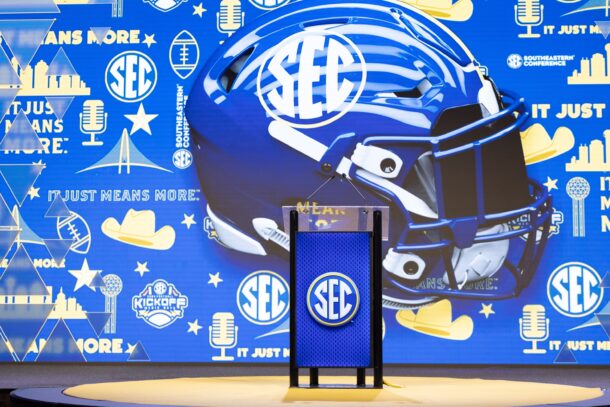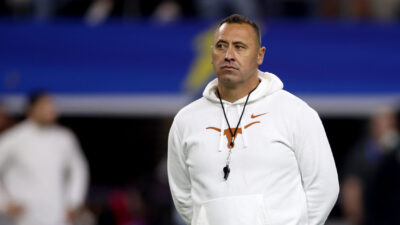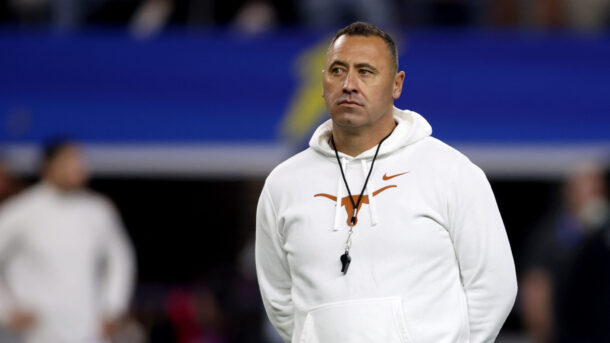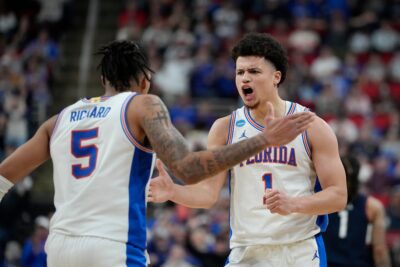Ad Disclosure
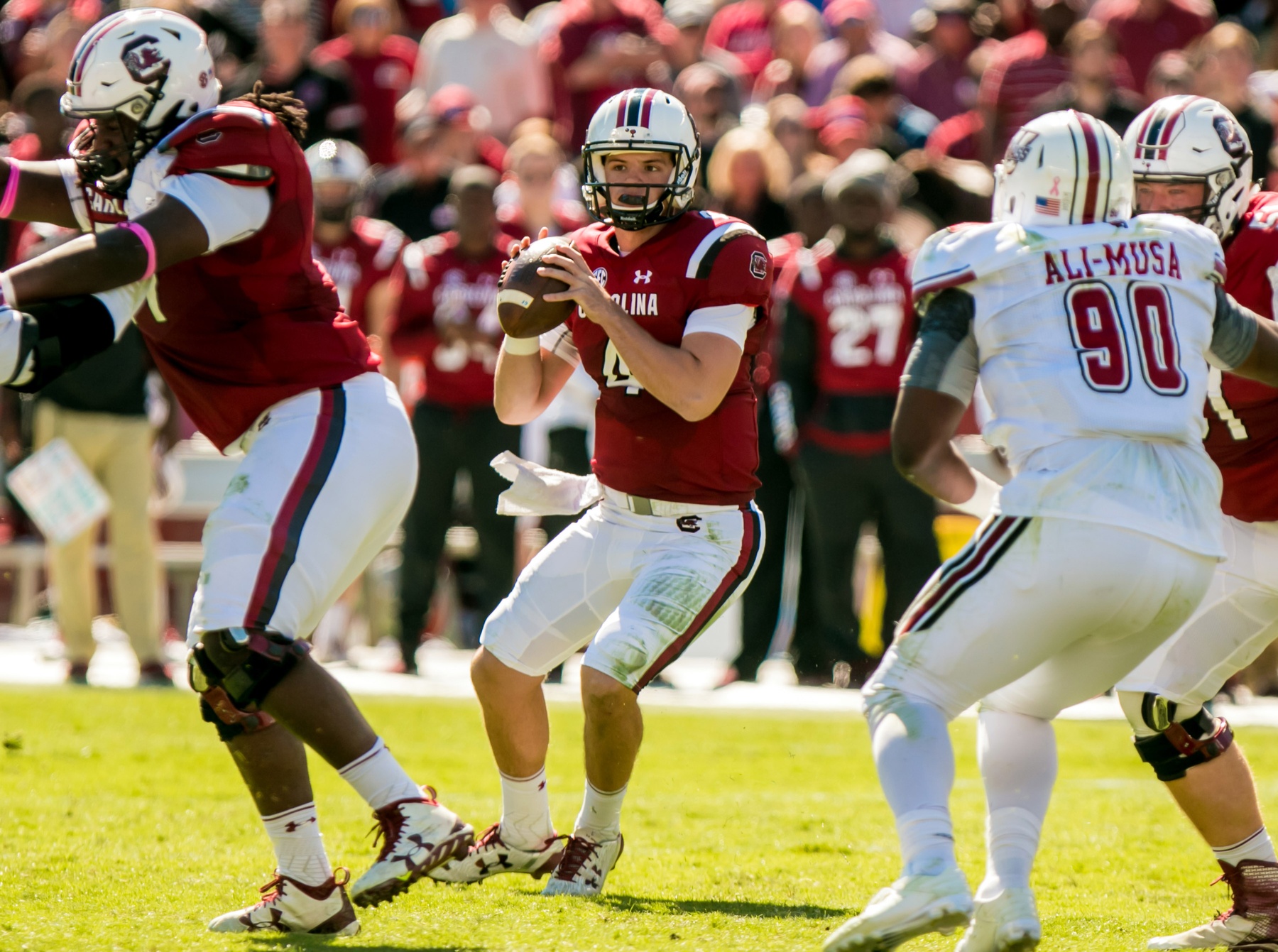
College football teams take a step forward or backward each year, but there is also in-season fluctuation.
Improvement in key facets of the game can help a team make a run toward a division title or a spot in the Playoff, while regression can hurt its chances at accomplishing its goals.
Here is one area of progression or regression for each SEC team in 2016.
Alabama
Biggest progression: Run game
It may seem odd to say that Alabama’s ground game has seen the most improvement so far in 2016, but it has gone from great to really great (and the rest of the team is already really great). Usually a massive strength for the Crimson Tide, they averaged 5.28 yards per carry over the first five games of the season. In the five games since, that number has jumped to 6.52.
The biggest improvement has come from quarterback Jalen Hurts. He’s been let loose on the ground in recent weeks and it’s paying off. In Alabama’s first five games, Hurts had only one 100-yard rushing game and averaged 4.8 yards per carry. Over the last five games, Hurts had three games over the century mark and averaged 6.5 yards per carry.
Arkansas
Biggest regression: Red zone defense
When adjusting to each opponent and game situation, Arkansas hasn’t changed much over the course of the entire season. Their running game has struggled with consistency over the past few games, but those numbers were likely affected by the Razorbacks getting behind early. One area that has seen a slight down-tick is Arkansas’ red zone defense.
In the first half of the season, the Razorbacks allowed opponents to score on 72.2 percent of their trips into the red zone. Opponents scored 13 times during that span, including nine touchdowns. Over the last five games, Arkansas has allowed its opponents to score on 88.9 percent of their red zone chances. Of the 16 scores in that stretch, 14 have been touchdowns.
Auburn
Biggest progression: Scoring
Although the Tigers have scored only a combined 30 points over their past two games, that should not overshadow the explosion of points they had since Week 4. Once Gus Malzahn turned over play-calling duties to Rhett Lashlee, the offense became extremely explosive and effective.
In Auburn’s first four games, it averaged 24.5 points and that number is buoyed by a 51-point game against Arkansas State. Granted, the Tigers other three opponents were Clemson, Texas A&M and LSU, but they averaged just 15.7 points in those games. During the next four weeks, Auburn’s offense found its rhythm and averaged 48 points per game. Injuries have taken their toll recently, but something clicked for the Tigers.
Florida
Biggest regression: Pass offense
Injuries have caused inconsistency at quarterback for Florida, and the team’s production in the passing game has suffered. Luke Del Rio wasn’t flashy to start the season, but he was productive and protected the football. Since then, the Gators haven’t gotten the same quality from either Del Rio or Austin Appleby.
In Florida’s first four games, it averaged 272 yards passing and had nine touchdowns to only three interceptions. At Vanderbilt, the Gators struggled to throw the ball, gaining just 144 yards through the air, and haven’t been great since. Over the past five games, Florida averaged 188 yards passing and had four touchdowns and seven interceptions.
Georgia
Biggest progression: Field goal kicking
Georgia has seen some tremendous improvement from its young defense this season, but the biggest change has been in the kicking game.
The Bulldogs broke camp with redshirt sophomore William Ham as the team’s kicker. Ham struggled mightily with consistency, making just three of his seven attempts, and even the ones he made didn’t look to be cleanly kicked. This caused Kirby Smart to go for it more on fourth down instead of attempting kicks, but that has been remedied with the emergence of Rodrigo Blankenship.
The redshirt freshman has made nearly 85 percent of his kicks and had a string of 10 straight field goals until he missed a 49-yard attempt last week against Auburn.
Kentucky
Biggest progression: Run offense
After a relatively slow start on the ground, Kentucky has developed one of the top rushing attacks in the SEC. The Wildcats failed to top 100 yards on the ground in each of their first two games and averaged 171.8 rushing yards over the first five. Take out a 381-yard effort against New Mexico State, and Kentucky’s rushing average falls to 119.5 yards in the other four.
Since then, however, the Wildcats have become lethal on the ground. Kentucky has run for 1,526 yards in the last five games and is averaging 305 yards per game in that span. The addition of quarterback Stephen Johnson helped spark the running game, but this improvement is truly a group effort.
LSU
Biggest progression: Pass defense
The Tigers allowed over 200 passing yards in each of their first four games of the season, but they have seen improvement since. In the last five games, only two of LSU’s opponents have surpassed the 200-yard mark and quarterbacks are completing an average of 55 percent of their passes during that span.
LSU has six interceptions in its last five games compared to only three touchdown passes allowed. This stingy pass defense has allowed the Tigers to become a complete defense and win four of their last five games.
Mississippi State
Biggest regression: Pass defense
Mississippi State’s pass defense has gone in the opposite direction of LSU’s. The Bulldogs allowed nearly 400 yards through the air in last weekend’s 51-3 blowout loss against Alabama, and they hadn’t been great against the pass in the weeks prior.
Although Mississippi State’s pass defense wasn’t great to begin the year, it has gotten slightly worse of late. Samford attempted 70 passes against the Bulldogs and completed 60 percent of them for 468 yards with four touchdowns and three interceptions. It’s difficult to believe Mississippi State wound up losing that game to an FCS opponent, but it serves as a prime example of the Bulldogs’ woes against passing attacks.
Missouri
Biggest regression: Field goal kicking
If this were a year-by-year look at each team, the obvious choice would be Missouri’s defense. This season, the Tigers’ defense has been consistently sub-par, though, and hasn’t steadily improved or worsened. One aspect of the team that has worsened is the kicking game.
Tucker McCann did not get off to a great start this season, making only one of his three attempts in the Tigers’ season opener. He seemed to improve after that, however, and made his next four attempts and 27 of the following 29 extra points. But in the last three games, McCann missed four straight field goals and missed two extra points against Vanderbilt. Kicking has been a problem spot for much of the year, but it appears to only be getting worse.
Ole Miss
Biggest regression: Passing touchdowns
There hasn’t been much variation statistically from Ole Miss this season. Many of the Rebels’ strengths remain their strengths and the same holds true with their weaknesses. One aspect of their offense that has trended downward, though, is scoring through the air.
One of the high-powered passing offenses in college football, Ole Miss scored 14 passing touchdowns in its first four games. The Rebels have only nine in the six games since. Ole Miss is still managing to score at a strong pace, it just isn’t doing so by throwing the ball.
South Carolina
Biggest progression: Quarterback play
A strong defense carried South Carolina for much of the season while the Gamecocks struggled to find consistency at quarterback. Perry Orth and Brandon McIlwain were swapped throughout the year, and neither managed to spark the offense.
Orth did have a strong outing against Georgia, completing over 70 percent of his passes for 288 yards, but he was benched in favor of Jake Bentley the next week against UMass. Since Bentley has been the starter, South Carolina has found a tremendous sense of balance on offense. Bentley’s accuracy has been superb and he’s managed the Gamecocks’ offense very well.
Tennessee
Biggest regression: Run defense
Injuries have taken a toll on Tennessee’s defense this year, and that is most apparent in its ability to stop the run. In their first five games, the Vols allowed an average of 149 yards on the ground. That run prevention helped Tennessee jump out to a 5-0 start.
Since then, however, the Vols have struggled to contain the run and it has cost them some games. Tennessee surrendered a total of 762 yards on the ground against Texas A&M and Alabama and gave up an average of 284.6 yards in its last five games.
Texas A&M
Biggest regression: Run offense
The loss of quarterback Trevor Knight has had a big impact on the Aggies’ ground game. With Knight at the helm, Texas A&M had one of the most explosive offenses over the first half of the season.
The Aggies topped 200 yards on the ground in each of their first six games, averaging 274 yards and over three touchdowns per contest. During the last four games, though, Texas A&M had only one outing with over 200 rushing yards, which came against New Mexico State. The Aggies averaged 148 yards and 1.25 touchdowns in that span and the loss of Knight won’t help moving forward.
Vanderbilt
Biggest progression: Third-down defense
Vanderbilt’s defense has been playing at a very high level for most of the season, but it has improved its ability to get off the field on third downs. This has helped the Commodores keep some dynamic offenses at bay and led to close games all year long.
Over the first five games, Vanderbilt allowed opponents to convert 42.9 percent of their third-down attempts. In the five games since, the Commodores held opposing offenses to a 37.1 percent conversion rate.
